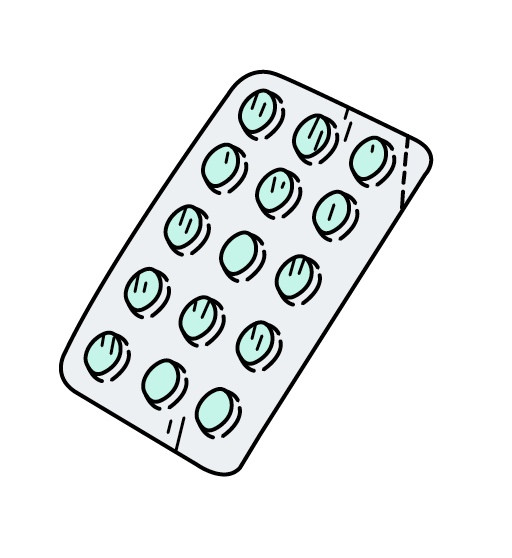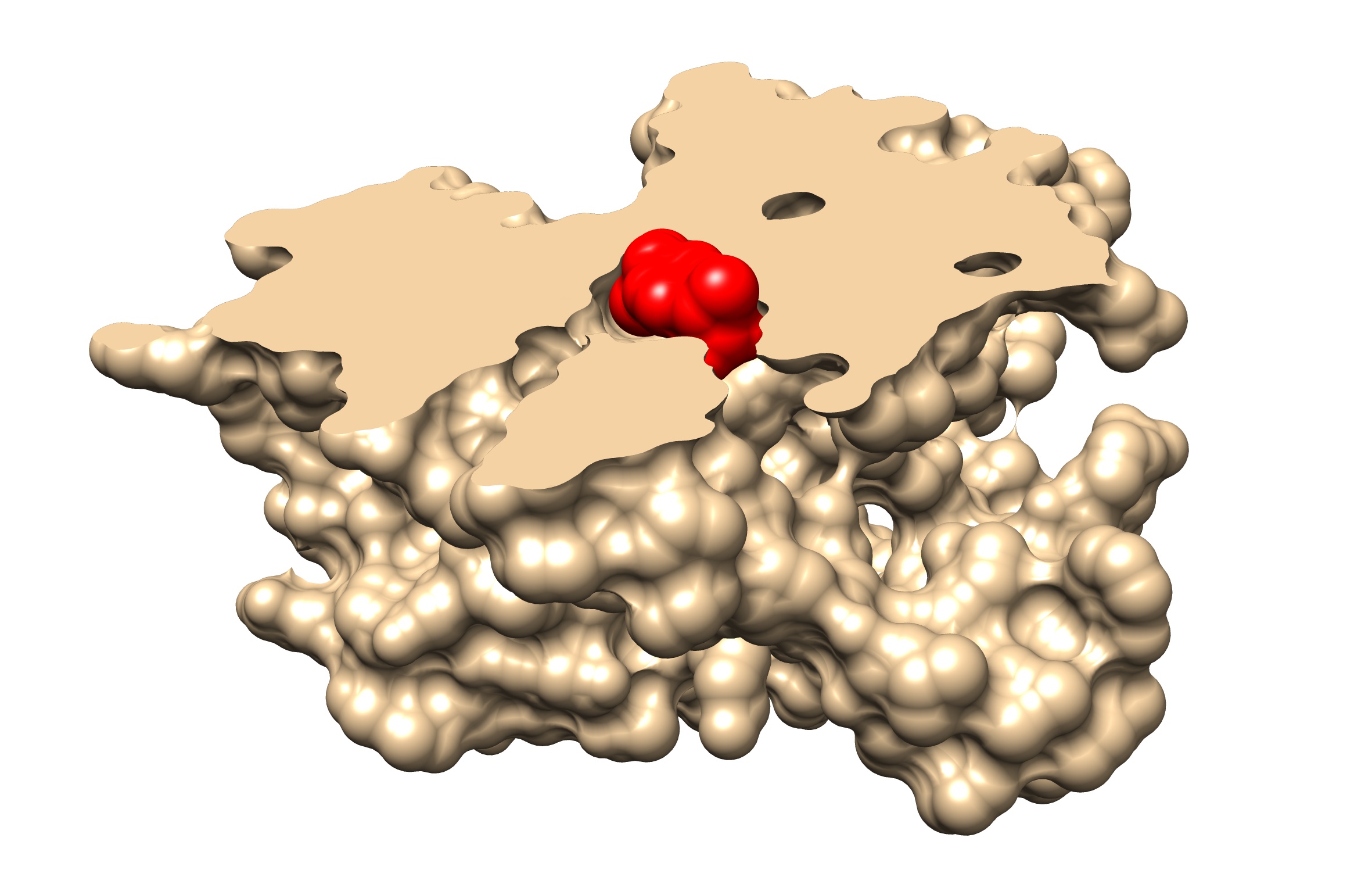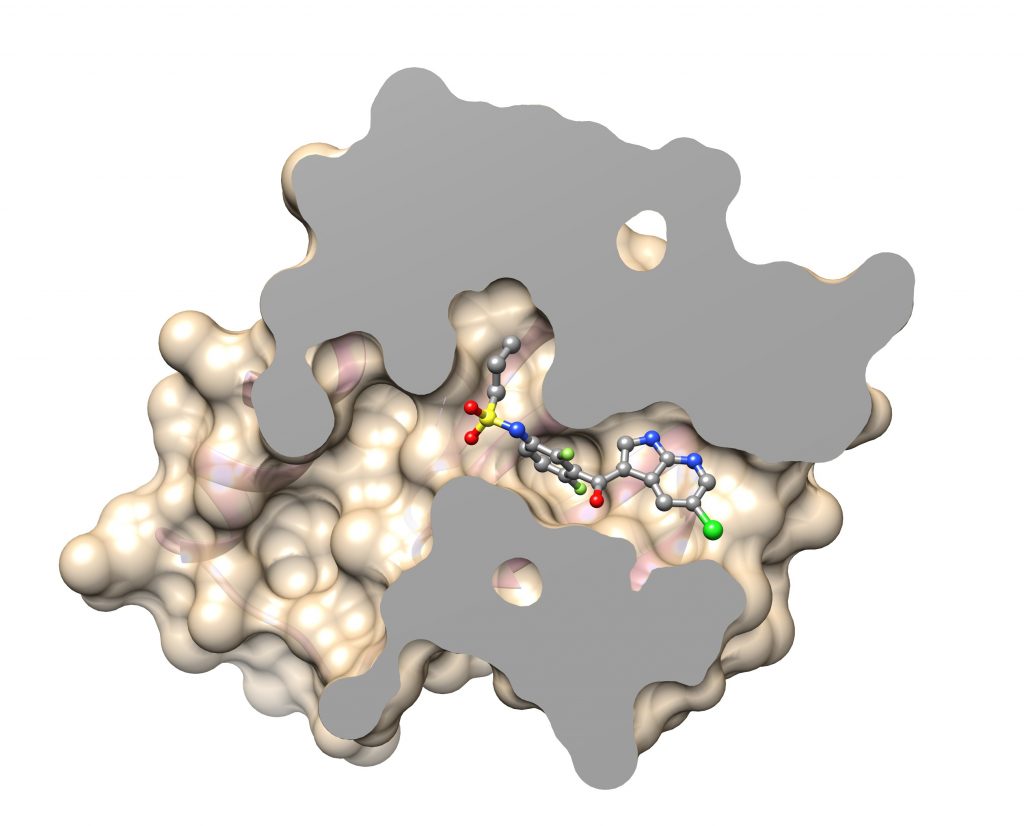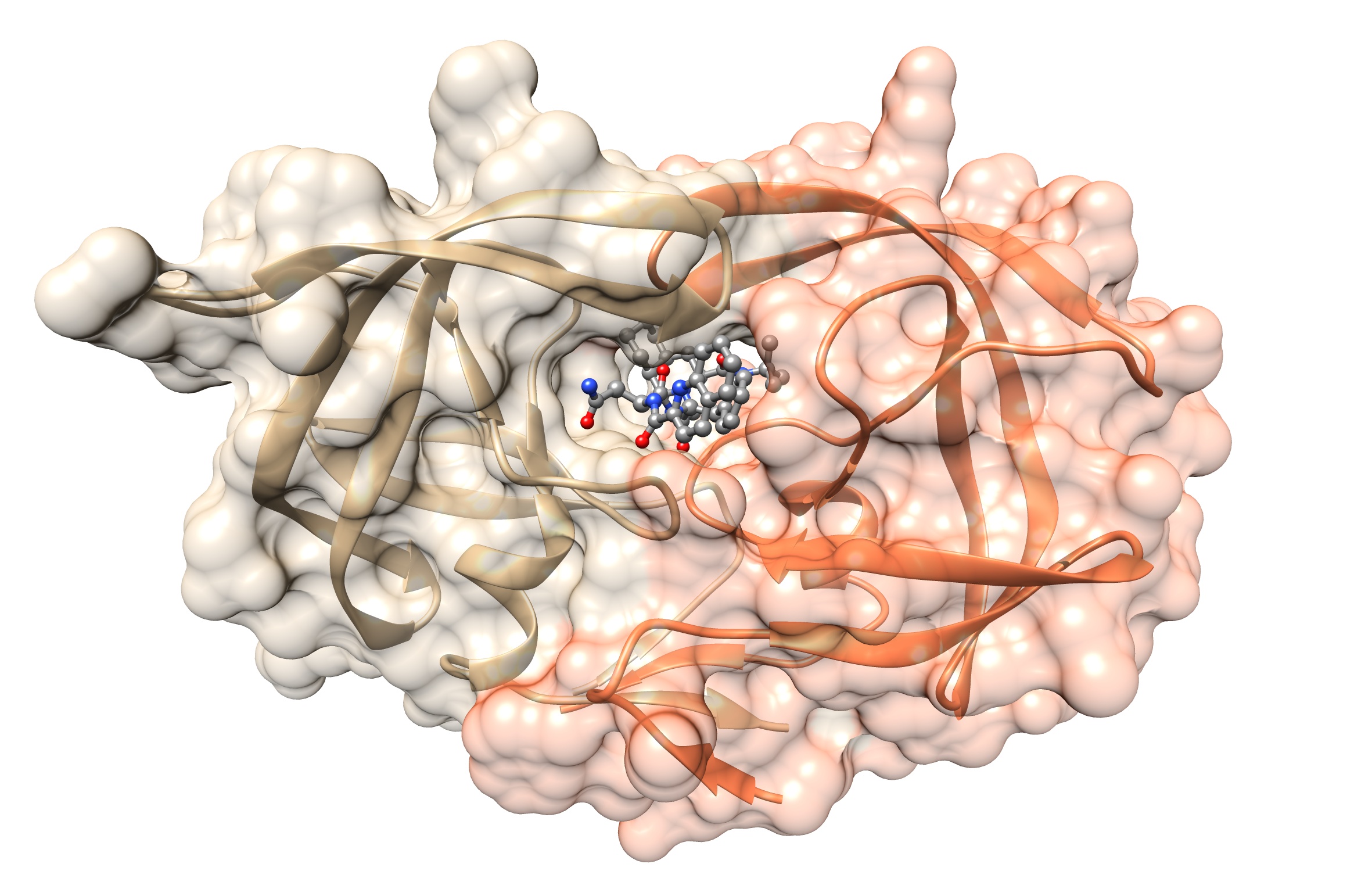DEFINITION
What is a drug?
One drug usually targets one protein that has a primary role in the causes – or the symptoms – of a given disease.
Currently, there are 2,000 molecules known to be drugs.

A DISEASE, PROTEINS THAT ARE DYSFUNCTIONAL
Diseases usually occur when:
→ a protein’s 3D structure has been modified following a mutation (genetic disease);
→ there is too much or too little of a protein in an organism;
→ infectious agents such as bacteria, viruses or fungi invade our body. When this happens, proteins belonging to the infectious agent are present in large quantities in our body.

CAUSES OR SYMPTOMS?
Sometimes it is difficult to discern between the causes of a disease, and its symptoms – both due to different proteins.
As an illustration, patients with arthrosis suffer from pain and inflammation in their joints.
The SYMPTOMS of arthrosis: pain and inflammation (due to COX2 protein). The CAUSES of arthrosis: the deterioration of cartilage (due to several other proteins).

PROTEINS AND DRUGS
Currently, about 750 human proteins are targets for drugs (source: The Human Protein Atlas)
The drug-protein interaction is similar to a key and lock: correct insertion depends on the shape of both the protein and the drug.


ONE DISEASE, ONE PROTEIN, ONE DRUG?
FINDING THE PROTEINS RESPONSIBLE
In order to treat a disease as effectively as possible, you need to identify the protein(s) that are responsible for it or those that play an essential role in its development. A lot of scientific research is dedicated to this.
Indeed, usually several dysfunctional proteins are the cause of a disease such as Parkinson’s disease, Alzheimer’s disease or cancer for instance.
Researchers will seek to identify each dysfunctional protein to find the best-adapted treatment possible.
FINDING THE RIGHT DRUG...
Research teams regularly announce the identification of proteins involved in diseases. However, turning these proteins into novel therapeutic targets and designing new drugs is a huge challenge!
Molecular modelling plays a key role in designing drugs today. Once the 3D structure of a protein researchers would like to target is known, a drug that is likely to insert itself in the protein’s functional site can literally be ‘drawn’. Currently, millions of molecules are potential drug candidates (source).

A FEW EXAMPLES
PAIN
Back pain? Headache? Sore knee? To soothe the pain (symptom), a doctor would probably give you a drug known as ibuprofen. Why?
Ibuprofen is a molecule that can insert itself into a protein known as COX2. COX2 is responsible for producing an excessive amount of pain signals at the site of inflammation. As ibuprofen nestles down in COX2 (in beige), the ibuprofen molecule (in red) stops COX2 from producing pain signals. As a result, we feel less pain.

MELANOMES
60% of melanomas are caused by a mutation in the BRAF gene – known as BRAF V600E. The mutation V600E causes a change in the 3D structure of the BRAF protein. As a result, the protein is constantly activated and thereby unable to regulate cell division. Consequently, cells multiply unimpeded. Treatment consists in blocking the altered BRAF protein.

AIDS
AIDS – or Acquired Immune Deficiency Syndrome – is the delayed reaction to an infection by a virus known as ‘human immunodeficiency virus’ or HIV. To counter the development of AIDS, patients who have been infected by HIV (HIV positive) are treated with drugs that target several of HIV’s proteins to stop the virus from multiplying.
Saquinavir is a drug that inserts itself into one of HIV’s proteins known as a protease; once bound to the protease, saquinavir blocks viral replication. This particular drug is part of HIV/AIDS triple therapy.




